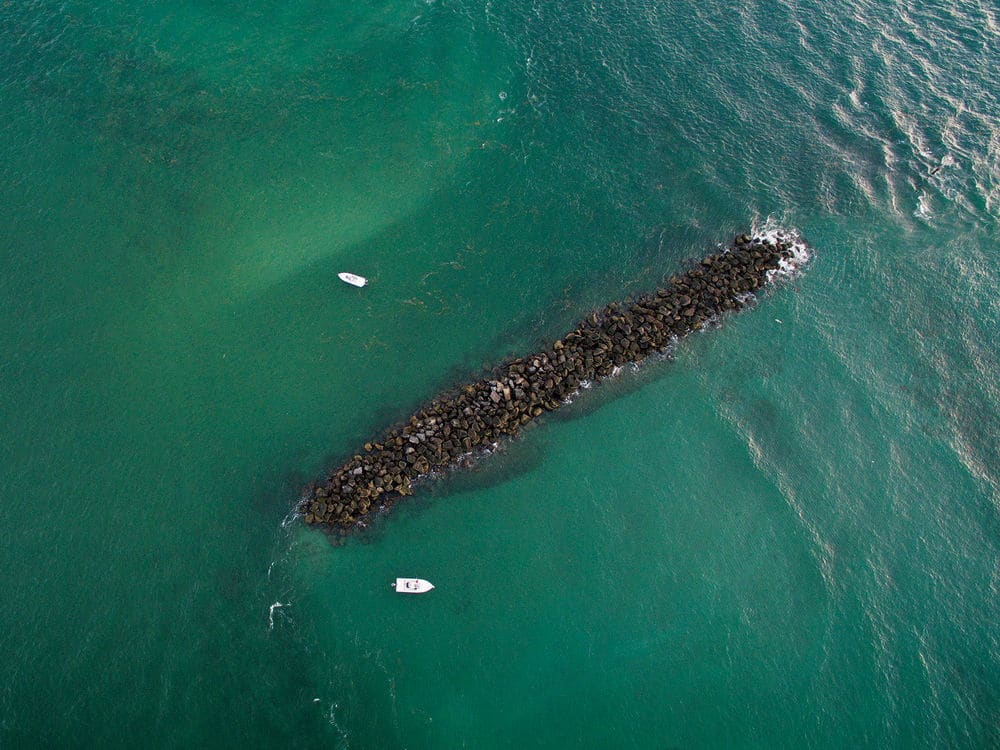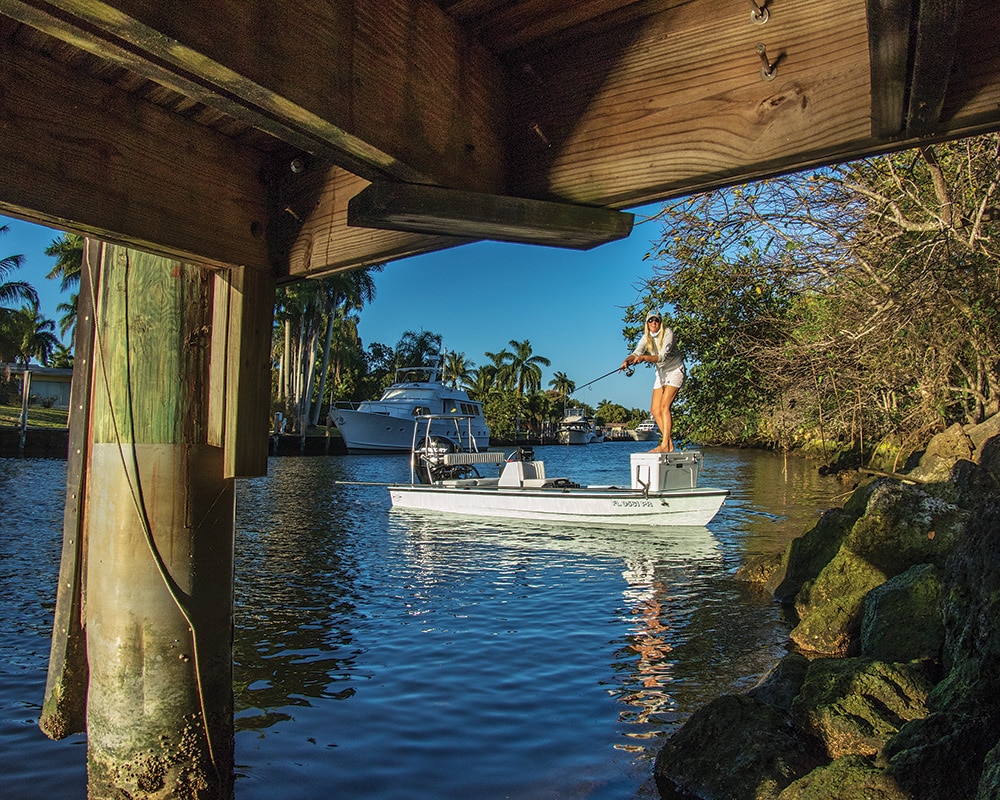
By 2020, the National Oceanic and Atmospheric Administration forecasts 135.63 million people living in counties along the nation’s coast. That’s about 40 percent of the population residing in counties that make up less than 10 percent of the land area of the contiguous United States. Simply stated, people enjoy being on or near the water.
Crowded residential areas on coastal waters equate to a jumble of docks that edge brackish bays, rivers and creeks. Don’t forget the accompanying boardwalks, pilings, boat lifts, dredged channels and all the rest.
We miss out when we motor away from these obvious fish attractors. Fishermen can catch plenty of residential fish and even save some gas by targeting close-quarters docks and pilings common in every coastal city. Three expert captains explain their dock-fishing techniques.
Spotted Bay Bass Fishing
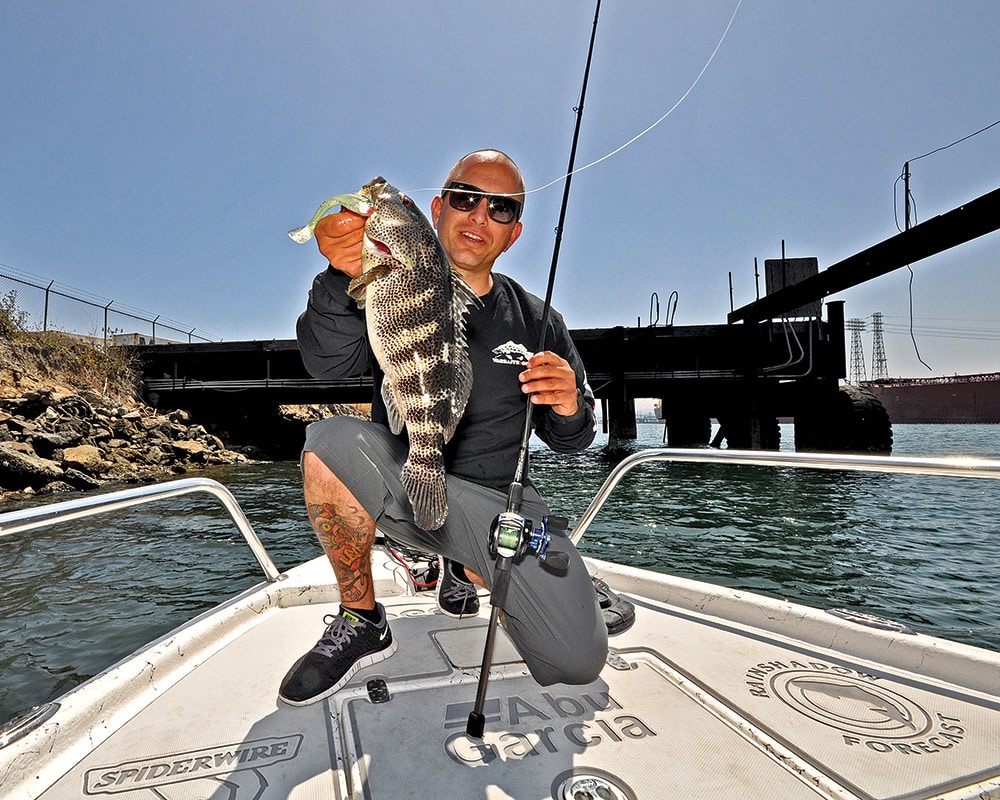
Capt. Bob Day has dock fishing for bass dialed in — not largemouths; rather, he targets spotted bay bass (Paralabrax maculatofasciatus, also referred to as spotted sand bass). Specializing in light-tackle fishing in San Diego Bay, Day targets bass, yellowfin croaker, Pacific bonefish and others.
“Spotted bay bass are opportunistic predators,” says Day. “They attack food pushed past them by the currents, but they also eat items stuck to docks, like clams and mussels.”
Comparing bay bass to largemouth bass can’t be avoided; in fact, many anglers use the same tackle for both. “The sand bass hide close to the structure of the dock,” explains Day. “They will dart out to get food and then go back. Sometimes they will be nestled right against the dock.”
Bay bass aggression relates inversely to the size of the fish — a ferocious appetite for small soft baits inside a frame that averages 12 inches. The record IGFA bay bass is just shy of 5 pounds.
Use darker patterns in low light and brighter colors as the light increases. “In low light, I don’t think the fish can see colors, but they can see the profile of a darker color,” says Day.
Part of fishing docks is utilizing the right gear to handle a target in tight quarters. For bass, Day sizes down to lightweight gear, choosing a baitcaster spooled with 12- to 15-pound-test line and a rod with medium action to facilitate skip-casting and accuracy around docks. He sets the drag to approximately 33 percent of the line weight, so 12-pound-test line receives 4 pounds of drag.
“I use 3- to 4-inch swimbaits with ¼- and ⅜-ounce jig heads,” says Day. “I position the boat down-current so I can swim the bait with the current, cast along the length of the dock and swim the bait parallel to it. If I catch a fish on one dock, I’ll make repeat passes.”
Other popular techniques include casting from about 15 to 20 feet away and skipping baits under piers and near pilings. To get right next to a piling, cast on top of the dock, pull the bait off slowly and let it sink next to the pylon. Both casting methods have high hookup rates for bass.
Flounder Fishing
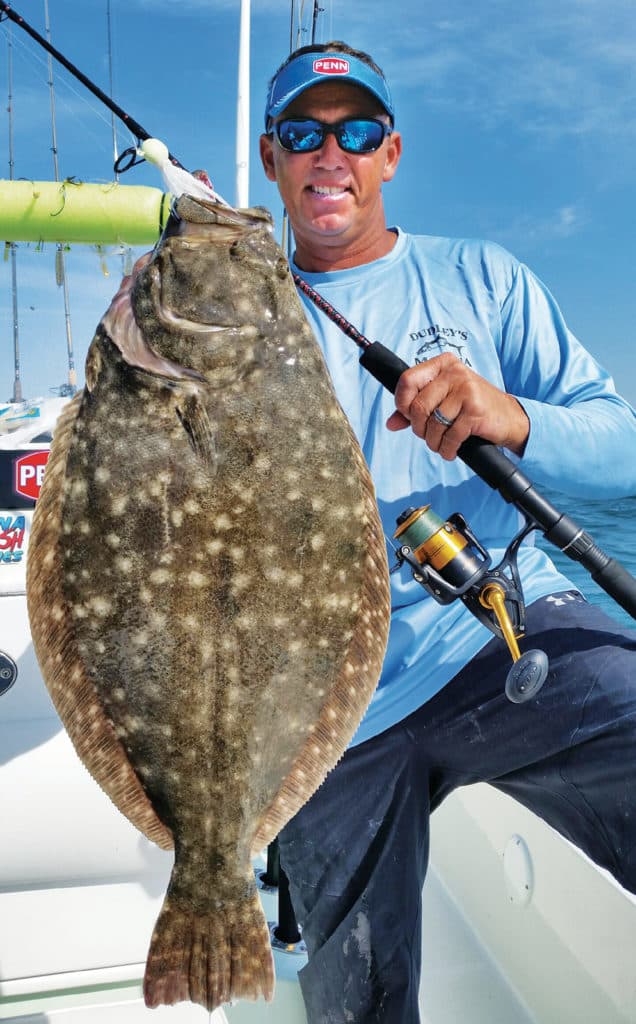
Understanding how flounder position near boat docks helps provide a blueprint for anglers to target most ambush feeders near structure.
“Flounder are true bottom-dwelling ambush feeders, so it makes a lot of sense for them to congregate around structure,” says Capt. Jeff Cronk, of Swansboro, North Carolina. “Structures like docks and bridge pilings usually have a lot of growth on them that provides a constant food supply for baitfish, as well as a current break for all types of small fish that flounder feed on.”
When fishing boat docks, Cronk targets the outside half of the dock on the latter part of a falling tide and the inside half on the last of the rising tide. “Over many years of targeting flounder around docks, I’ve found a pattern with flounder following baitfish movement: heading toward the shoreline as the tide gets higher, and receding as the tide drops out.”
Cronk, in particular, targets the down-current side of a dock because ambush feeders lie with their head into the tide. He sets the Power-Pole and casts to the edge of the dock or under it.
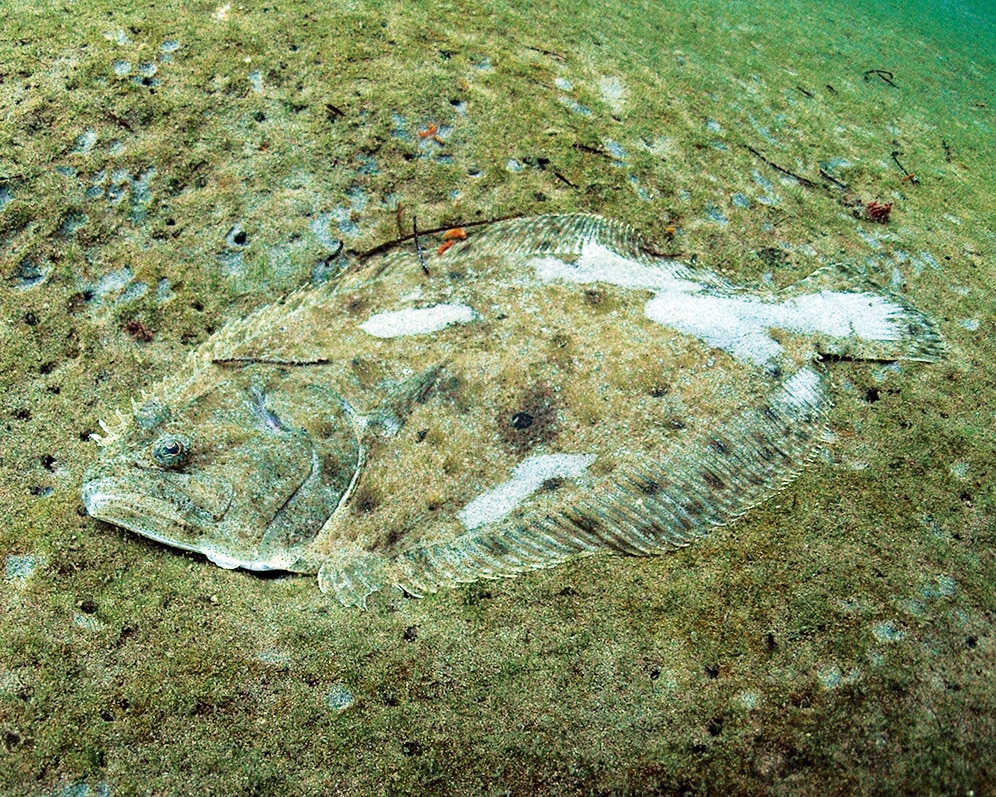
“When I have to fish the up-current side of a dock, I prefer to fish a jig head, bucktail or spinnerbait and cast toward the shore, just up-current of the dock, allowing my bait to sweep toward the dock during the retrieve,” says Cronk.
Cronk has one other important tip. Try to find holes under and around docks where flounder hunker down. It could be a trough created by a boat prop entering or exiting a boat slip. Or it could be something else: A naturally occurring bottom feature that develops around dock pilings provides the perfect feeding habitat for flounder in the form of depressions.
“As current moves past a pylon, the water wraps around and tends to wash out the bottom just behind and down-current of the pylon, creating a depression,” explains Cronk. “The larger the diameter of the pylon and stronger the current, the bigger and deeper the depression. Most anglers aren’t even aware of this, but flounder use these depressions to avoid the current as a perfect ambush spot.”
Snook Fishing
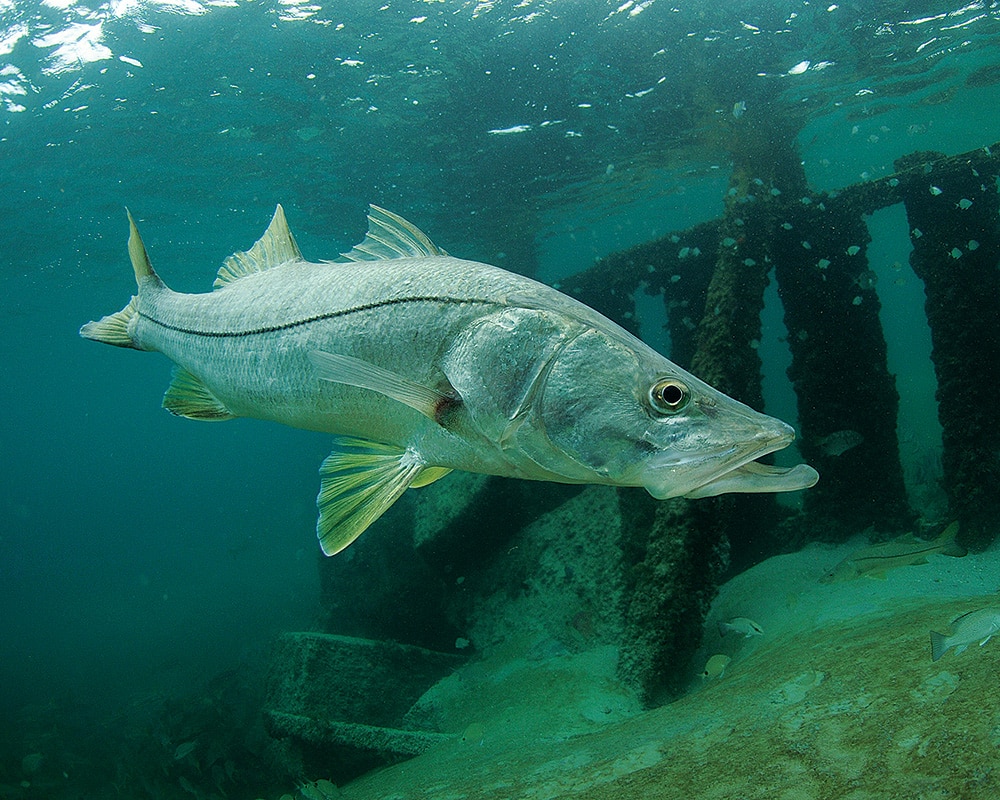
Landing the kind of big snook that Capt. Jeremy Neff targets around Stuart, Florida, is much harder than finding them. A consistent food supply, water movement and dark, off-color waters are the prime conditions he looks for.
“That’s why fishing at night has many advantages,” says Neff. “The dock lights in Stuart are legendary, illuminating creatures riding the tide. Sport fish lurk in the shadows of the lights, devouring bait as they pass. I’ve noticed that fish of the same size hang together, so if you are catching small fish, try moving to another dock.”
Landing fish is another story.
“Some of the docks, I call them ‘jailbreaks,’” says Neff. “The docks are so tight, loaded with pilings and full of barnacles, that getting fish out is similar to a jailbreak.” With so many docks close together where Neff fishes, he tightens up the drag when targeting larger fish.
“Once I hook a large fish, I have already gone over the escape plan with my customers,” says Neff. “I generally use my trolling motor to get to a place where we can fight the fish and land it in open water.”
If a fish goes into a mess of dock pilings, stop putting pressure on the fish and open the bail. Neff will maneuver the rod around the pilings, or even jump out of the boat and give chase if the water’s shallow.
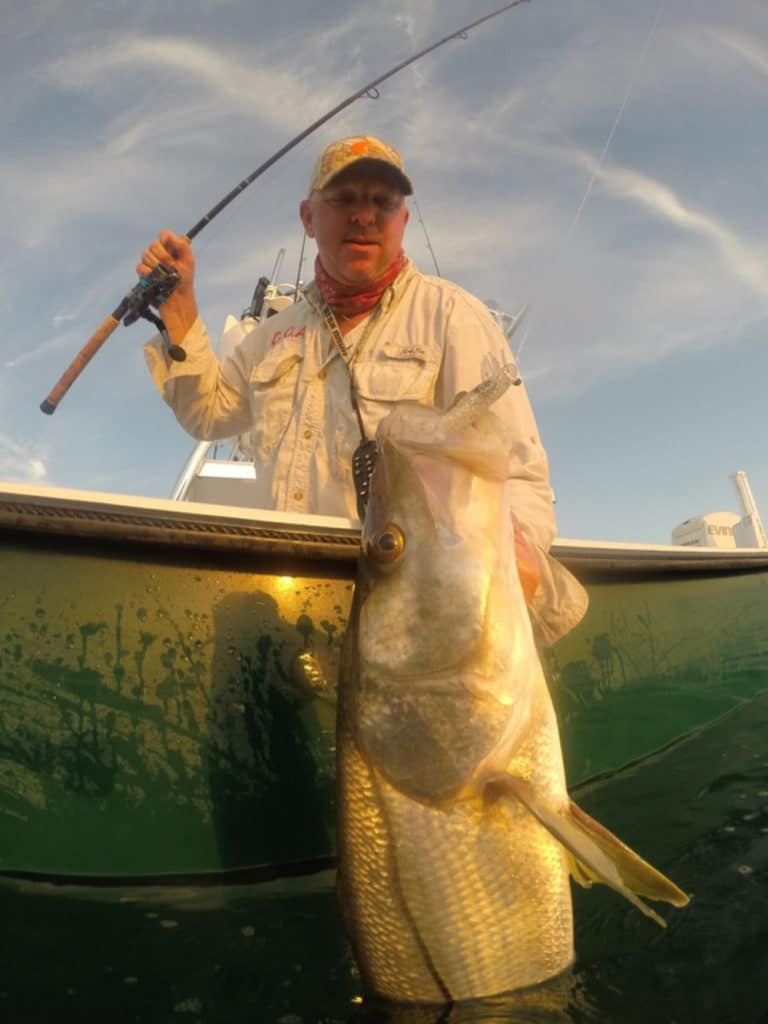
“More often than not, a big fish will make it to the pilings with an inexperienced angler,” points out Neff. “You must be ready for the hit to happen, and then put heavy pressure on them immediately after the bite.”
Neff uses 30- or 50-pound braid with 50- and 80-pound leader when targeting large snook or tarpon.
“If you don’t throw a lure or bait deep enough under the dock, you won’t reach the fish,” says Neff. “But the farther under the dock you cast your presentation, the less likely you’ll get it back. No risk, no reward.”
Watch how the current is moving; a swift tide can easily track your line right into a piling. The best presentation is a lure or bait retrieved at an angle moving toward the fish’s cone of vision.
Next Up: Jetty Fishing
